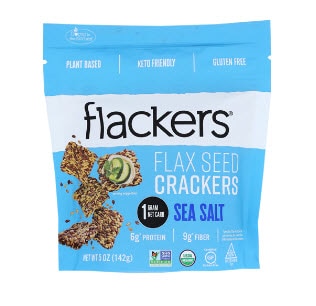Have you seen or heard the term net carbs and wondered what in the world it means? Net carbs, also known as digestible carbs or absorbable carbs, have gained traction in recent years with the increase in popularity of low-carbohydrate and keto diets.
We will break down exactly what a net carb is, why net carbs can be controversial or misleading, and whether net carbs are something you should start to pay attention to or not.
What are net carbs?
Net carbs are calculated by taking the total carbohydrates and subtracting the dietary fiber and sugar alcohol. For example, if you have a food product that contains 15 grams of total carbohydrates and it has 6 grams of fiber and 4 grams of sugar alcohol, the net carbs would technically equal 5 grams.
The net carbs are defined as the amount of carbs that are absorbed by your body.
Some people count net carbs instead of total carbs because they believe that the fiber and sugar alcohols are not absorbed by the body and therefore do not have any impact on raising the blood sugar level, however, it is not always that simple.
Fiber
Fiber is a type of carbohydrate that your body does not digest. It passes through your system undigested and helps you feel full. There are two types of fiber, soluble fiber and insoluble fiber. Both types of fiber play different roles in our bodies and impact digestion and blood sugar levels differently.
Studies show that the health benefits of dietary fiber depend on the fiber type, the amount eaten, and the individual.
Soluble fiber: Soluble fiber dissolves in water and forms a gel that slows down the food’s movement through your digestive system which can help make you feel full. Soluble fiber is associated with a decreased risk of heart disease, decreased cholesterol levels, and better blood sugar control. Soluble fiber can be found in grains, seeds, berries, legumes, and many vegetables.
Insoluble fiber: Insoluble fiber does not dissolve in water. It adds bulk to stool and can help prevent constipation. Insoluble fibers are found in foods such as whole grains, beans, nuts, and root vegetables.
Sugar alcohols
Sugar alcohols are used in place of sugar to make foods taste sweet. They are popular in many sugar-free foods because they are only partially absorbed by the body.
Some examples of commonly used types of sugar alcohols include xylitol, erythritol, and maltitol. Sugar alcohols can have varying effects on blood sugar and insulin levels, although the effects are generally much lower than those of regular sugar.
Why net Carbs can be misleading
While net carbs can be a helpful tool for managing carbohydrate intake for some people, it is important to be aware of the limitations and the potential to be somewhat misleading. Here are four reasons why:
- No standardization: Unlike “total carbs” which are regulated by the FDA, “net carbs” is not an official FDA-approved term. This means there is no consistent definition for how to calculate them which can lead to confusion and inconsistency across different food brands and nutrition labels.
- Individual variability: The impact of fiber and sugar alcohol varies greatly between individuals. While most people don’t fully absorb all of the fiber or sugar alcohol that they consume, there is no way to know the exact amount their body processes.
- Not all fiber is created equal: Some fiber types are more digestible than others so subtracting all of the grams of fiber assumes all fiber impacts blood sugar equally, which is not the case. Many food labels do not separate the type of fiber which also makes it difficult to calculate.
- Focus on marketing to make foods appear “healthier”: Unfortunately, many food brands use net carbs as a marketing strategy, highlighting the low number to promote products that might still be high in total carbs or calories. This can lead consumers to believe that these are truly “healthier” options when they might not be.
Should you count net carbs?
There are pros and cons to counting net carbs rather than total carbs. Counting net carbs can help reduce restriction and may even promote foods with higher fiber intake.
On the flip side, solely paying attention to net carbs and choosing foods low in net carbs may also result in higher artificial sweetener intake and may not accurately account for the amount of carbs consumed due to the variance of how fiber and sugar alcohol impact people differently.
Individual needs and health goals should be considered before making the switch to net carbs and consulting with a registered dietitian for personalized guidance is always recommended.
Net carbs and diabetes
Due to the confusion around net carbs, a middle-of-the-road approach is often recommended, especially for people with diabetes who may be basing medication decisions on the amount of carbohydrates they eat.
Rather than subtracting all fiber and sugar alcohol from the total carbs, if a product has more than 5 grams of fiber or sugar alcohol, many Registered Dietitians or Certified Diabetes Care and Education Specialists will recommend subtracting half of those grams from the total carbs.
For example, if you eat a product such as Catalina Crunch Cereal that contains 14 grams of total carbohydrates and 9 grams of fiber per 1/2 cup serving, you could subtract half of the grams of fiber, or 4.5 grams, from the total carbohydrates making it 9.5 grams of carbs per serving.
Beyond net carbs: tips for making healthy choices
Net Carbs aside, choosing to consume whole, unprocessed foods rich in fiber, protein, vitamins, and minerals regularly is ideal. Aim to consume plenty of fruits, vegetables, nuts, seeds, whole grains, lean protein, and water daily.
It is also important to pay attention to portion sizes. Consider using smaller bowls and plates to help with portion control.
Some delicious, high fiber snack ideas that are perfect to bring on the go include Flackers, Lesser Evil Popcorn and Aloha Plant Based Protein Bars.
Whether you choose to use net carbs or not is a personal choice, however, if you have diabetes it is important to pay attention to the way your body processes certain types of carbohydrates like fiber and sugar alcohol. Remember that the “net carbs” listed on food labels can be misleading and always pay attention to the total carbohydrates in addition to the net carbs.
No matter how you count your carbs, the goal is always to choose the amount and type of carbs that help you feel your best while achieving your personal health goals.




